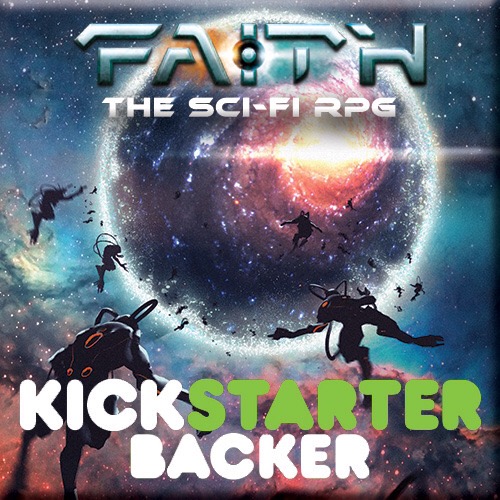H.P. Lovecraft, as a man and author, has inspired a great deal of controversy in the days since his death. However unpleasant his views may have been when seen from a more enlightened point of view though, he doubtlessly occupies a unique place in the world of horror fiction. From subtle psychological torment, to pulse-pounding chases, Lovecraft’s stories could easily place you up against world-destroying fiends and leave you to wonder what really just happened? Now, the rules light game Lovecraftian Shorts gives you and two friends the chance to invent such a tale of your very own: don’t forget to use the word cyclopian.
As might be expected, gameplay begins with character creation, something so simple that it can be rolled randomly. You can use as much or as little of the suggested character creation tables as you like. When combined with a d10, they can provide your character with a first and last name, an occupation, a hobby, and a signature piece of equipment. None of these details have any mechanical impact on the game whatsoever. They can help inform your decisions though in how to play your character. For our playthrough, Rob was a criminal who liked fishing and carried a magnifying glass. Megan was a writer who collected thimbles and carried a newspaper. And I was a priest who enjoyed falconry, who for some reason, carried a grappling hook. Megan and I rolled the same last name, so we played as brother and sister.

With characters established, players move onto the game proper. The story unfolds in nine scenes, with players taking turns until each has narrated the events of three. Each scene has a title, determined either at the beginning of the game or on the fly. Similar to Fiasco, the player who has the spotlight narrates the scene while he or she plays his or her character just like the other players.
Unlike Fiasco’s voting mechanic, the narrator elects a point when success or failure of his character would be pivotal to progress of the story. He or she then rolls a d10 to determine success. A score of 8 or better yields success. The score can be increased by any character choosing to employ one of their bonuses to confer a one time boost to a roll. If failure cannot be avoided, the player can elect to either be hurt or go insane. Each confers a penalty to all subsequent rolls. The twist is that insanity leads to success. If the challenge is not dealt with, it falls on the next player in turn to overcome the obstacle. The scene does not end until success is achieved. Luckily, penalties do not stack. however, if a character is both hurt and insane, and rolls less than an 8 again, they die.
When the ninth scene ends, the story is over. The game can be played in about an hour and flows quickly once the players internalize the rather straightforward rule set. This is a game best suited to smaller scope adventures, as nine scenes really isn’t much to work with all things considered. We had trouble coming up with appropriate scene titles at the outset, but did better as we went. With bonuses expended and all characters mad and hurt, the concluding scene made for a chaotic and dangerous end to the story.
Some may be put off by the limit of one die roll per scene, or the free-form nature of the storytelling. Players may veto any narration of what their character is doing, or anything that goes against the flow of the story when they are acting as narrator. In our play-through, Rob, Megan and I:
1. Went to the beach and saw Deep Ones rise from the sea,
2. Climbed up a rope with the help of a mysterious stranger to reach a car and flee,
3. Raced through a town overrun by monsters,
4. Talked our way through a military blockade,
5. Encountered the mysterious man again and noticed something odd about him,
6. Remembered the man’s true nature at the cost of Rob’s sanity,
7. Defended against an attack by the mysterious man come to silence any witnesses to his true form,
8. Convinced the military not to use Rob as a means of locating the evil entity behind the attacks,
9. Unsuccessfully failed to fight off final attack and died dragging the menace down into the sea.
When players work together in this game and are familiar with each others’ styles, it is very easy to build momentum and pile on the gory details. The game can be a lot of fun as three makes for an easy conversational feel with everyone getting a turn to pitch in their two cents. And as with other improvisational, GM-less games, it is remarkably surprising how satisfying the ending can be.
Lovecraftian Shorts makes for an easy recommendation, particularly at its very modest asking price. It makes for an ideal game when groups are short a player or three friends merely want to kill an hour with some fun, light role-play. It is highly recommended.
Our play through was released as an episode earlier this year. You can buy the game for $1.99 at DriveThruRPG.
Rob Weeks is the driving force behind the Balls and Bayonets Brigade Podcast. You can find him at @ZombieSlag on Twitter or @FireflyPodcast.
–Aser









 And then Monte Cook Games brought us The Strange, and we found out.
And then Monte Cook Games brought us The Strange, and we found out.